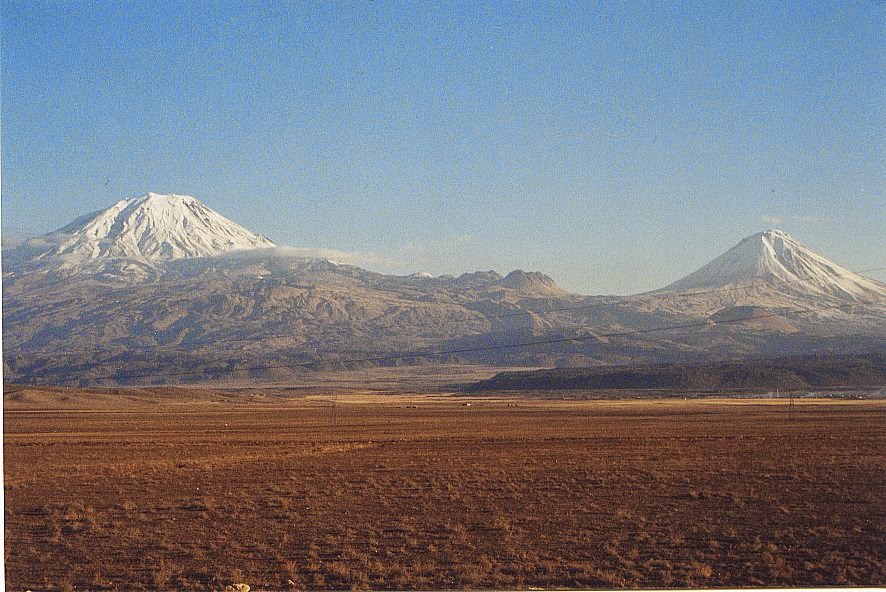Overview
4Mix is a nifty supplementary tool executed alongside GEDMatch calculator or ADMIXTURE outputs to establish the genetic distance and ancestral proportions of a given number of population combinations. Originally conceived by "DESEUK1" (Eurogenes Ancestry Project participant), it has been implemented numerous times across the wider genetic genealogy community.
In light of Lazaridis et al. 2016's recent "The genetic structure of the world's first farmers" [Link], crucial aDNA from the Near-East has been published and utilised by citizen scientists.
This brief entry provides users with an immediate means of assessing their ancestral proportions with the new releases through the PuntDNAL K12 calculator.
The R script, an example target file, the population source data and ReadMe's (DESEUK1's original and my own contribution outlining the "sink" version's procedure) can be found in the link below:
Purpose of the Package
This modification was simply designed to give the wider genetic genealogy community an easy and informal means of manipulating this recent data to explore ethnogenesis or personal ancestries at their own discretion. This is not a formal assessment of the above.
Limitations
Those intending to use this 4Mix package must be aware of the following:
1) The Iran_N, Iran_ChL and Levant_N samples here are GEDMatch contributions by genome bloggers "Kurd" and "Srkz". These currently number one, two and one respectively.
2) The utilisation of these samples as references is a short-term convenience and should not be considered equivalent to ADMIXTURE runs containing these samples among them. The methodology described above opens the potential for Davidski's "Calculator Effect" to manifest.
3) Due to the continued absence of Ancestral South Indian (ASI) aDNA, the Paniya were considered a "last resort" surrogate to address the ancestral proportions South/South-Central Asian samples would generate. Furthermore, additional modern reference populations (i.e. Yoruba, Nganasan) were used to furnish other worldwide aDNA deficiencies. These populations were chosen based on their peak modal status in the K's determined by the PuntDNAL K12 calculator.
Contributions
A very special thank you to the users "jesus" and "khanabadoshi" from Anthrogenica for their guidance and assistance in modifying the package for your usage. Another extended thank you to the user "surbakhunWessste" (also from Anthrogenica) for outlining the "sink" procedure here.
4Mix is a nifty supplementary tool executed alongside GEDMatch calculator or ADMIXTURE outputs to establish the genetic distance and ancestral proportions of a given number of population combinations. Originally conceived by "DESEUK1" (Eurogenes Ancestry Project participant), it has been implemented numerous times across the wider genetic genealogy community.
In light of Lazaridis et al. 2016's recent "The genetic structure of the world's first farmers" [Link], crucial aDNA from the Near-East has been published and utilised by citizen scientists.
This brief entry provides users with an immediate means of assessing their ancestral proportions with the new releases through the PuntDNAL K12 calculator.
The R script, an example target file, the population source data and ReadMe's (DESEUK1's original and my own contribution outlining the "sink" version's procedure) can be found in the link below:
Purpose of the Package
This modification was simply designed to give the wider genetic genealogy community an easy and informal means of manipulating this recent data to explore ethnogenesis or personal ancestries at their own discretion. This is not a formal assessment of the above.
Limitations
Those intending to use this 4Mix package must be aware of the following:
1) The Iran_N, Iran_ChL and Levant_N samples here are GEDMatch contributions by genome bloggers "Kurd" and "Srkz". These currently number one, two and one respectively.
2) The utilisation of these samples as references is a short-term convenience and should not be considered equivalent to ADMIXTURE runs containing these samples among them. The methodology described above opens the potential for Davidski's "Calculator Effect" to manifest.
3) Due to the continued absence of Ancestral South Indian (ASI) aDNA, the Paniya were considered a "last resort" surrogate to address the ancestral proportions South/South-Central Asian samples would generate. Furthermore, additional modern reference populations (i.e. Yoruba, Nganasan) were used to furnish other worldwide aDNA deficiencies. These populations were chosen based on their peak modal status in the K's determined by the PuntDNAL K12 calculator.
Contributions
A very special thank you to the users "jesus" and "khanabadoshi" from Anthrogenica for their guidance and assistance in modifying the package for your usage. Another extended thank you to the user "surbakhunWessste" (also from Anthrogenica) for outlining the "sink" procedure here.














